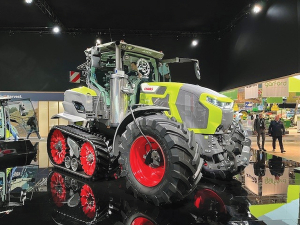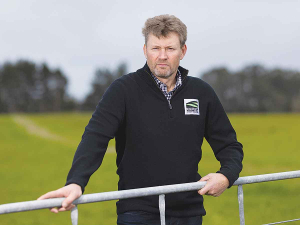With Australian farmers focussed on the big wet across the country’s south, let’s look at the background -- how the dairy market is behaving, and what it means for farmgate prices.
Before this season began, we predicted a milk price range of $4.80-$5.20/kgMS in southern states and that still looks good based on announced opening prices and step-ups.
But as part of that, we estimated the commodity value at $4.10/kgMS. So how are we tracking on that front?
Based on spot prices at the end of September (Figure 1), the weekly spot commodity value reached $4.70/kgMS. That’s good news, right? Yet does that mean a strong price rise?
Not so fast.
Our spot milk value is a lead indicator of actual achieved prices. It is based on spot quotes that on our analysis over time lead actual prices by three to four months. That means the relevant period we should focus on in the current season is from March 2016 through to the end of the first quarter 2017.
As you can see in the chart (Figure 2), the spot value took a long time to climb back up the hill towards $4/kgMS. In that time, the value of the A$ was virtually unchanged; the uplift has come mostly from improved prices of cheddar, skim milk powder and butter, as shown.
There’s recently been a sudden jump in spot prices. Between mid-August and mid-September our spot milk value jumped quickly as successive strong GDT results pushed market expectations higher, as some buyers came back to the market, partly because they feared that supplies may get harder to obtain later in the year.
But our spot value did not go past the forecast average until the second week of September and has held its ground since.
Based on how long the spot value sat below the $4/kgMS mark, in order for our full-year forecast to be met, the weekly spot value has to stay about $4.50/kgMS for the rest of the season, and obviously higher if full-year prices beyond our range are achievable.
The world market has to keep firming if that higher value is to be realised. So what could get in the way of that?
The global picture is looking better for the next six to nine months as the effect of the milk supply slowdowns in Europe and NZ combine to reduce the expected tonnages of product available for export.
The EU is the most important of these and its output is expected to shrink in the December quarter of 2016 by close to 3% versus last year.
Milk output in the final quarter of last year was stunning, so this is not a major cutback, and creative policy measures are being used to achieve that result.
Not only is the European Commission kicking in 14 euro c/kg for every kilogram of milk cut from production, individual countries are also chiming in, e.g. France, as are some companies. At least 50,000 farmers have applied to take EU taxpayers’ money and are promising to cut output.
Dutch co-op FrieslandCampina is also paying 6-10 euro c/kg for reductions in milk over the next six months.
However, other factors are in play. Farmgate prices are again rising and this will persist given the recovery in EU wholesale product prices in recent months. Feed input costs remain low, so black ink may not be far off for many farmers.
Milk prices have been low for months, and milk supply was in steady decline before these incentives took effect.
Because the intervention system is taking a lot of milk powder off the market, milk is scarce in some regions, creating other tensions. For example, the spot market for raw milk in the Netherlands is this week offering 40 euro c/kg. It’s worth more for some to actually increase output.
The net effect of these competing influences on milk supply will be interesting.
The more complex piece of the puzzle is how EU processors use their milk. As milk supply slows, and a massive stockpile of skim milk powder sits in warehouses around the region, processors will seek other uses – most likely in more valuable cheese lines.
Meanwhile New Zealand’s season is finely poised. Most Kiwis forsee less milk over the season, to help with the global re-balance.
But milk prices for the season will now easily exceed NZ$5/kgMS which, coupled with a good season for many farmers, may encourage more to increase milk flows. Once a cash break-even is reached, every kg helps restore cashflows.
The overall picture is improving nicely for the second half of this season, but many local producers who have culled cows may not have enough milk to take advantage of the turnaround.
• Steve Spencer is a director of Australian food analysis and consulting company, Fresh Agenda.


















